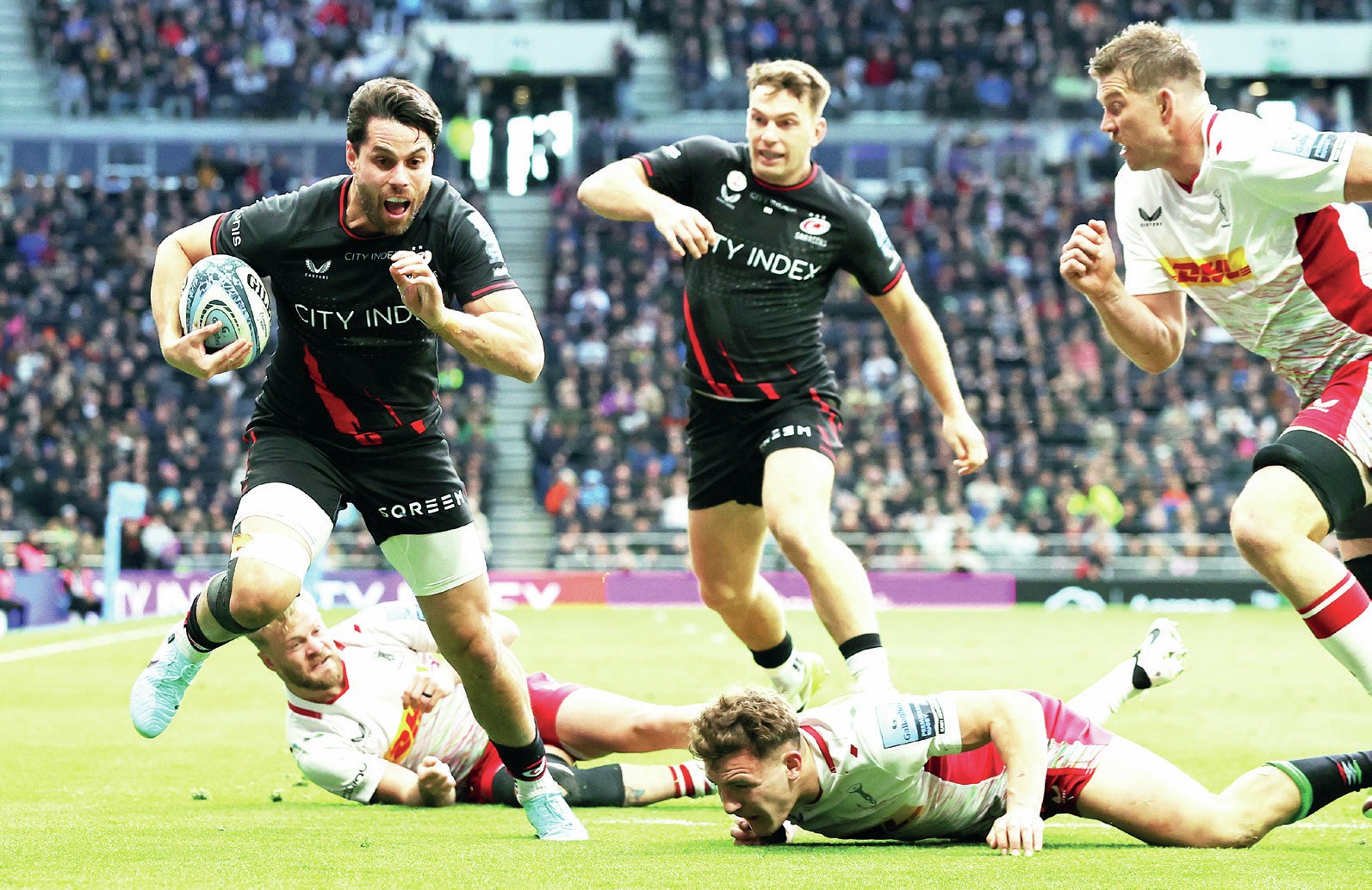With debts up to £300m, the game has lost its way

WITH the international window now over for the men's game, the focus has returned to club rugby with some strange results as the players begin to refocus on their weekly jobs.
Last week's match between Saracens and Harlequins, if that is what you can call such a one-sided contest, was notable for the size of crowd. Playing at the Tottenham Hotspur Stadium in the north London heartland of Saracens, the game attracted an audience of around 61,000 fans. If Sarries could attract an audience that size on a regular basis you would expect them to either increase the capacity of the StoneX Stadium in Hendon that currently seats just 10,500, or consider a long term coalition with the football club to share the stadium.
Considering the number of international players they have, it must make it virtually impossible for them to break even, let alone make a profit. There are mounting debts at every club in the professional game, the Premiership clubs alone have collective debt of around £300 million, it seems that the game has lost its way and is not being helped by World Rugby who, by continually changing the laws rather than improving the game for spectators and players, are just creating more confusion.
I hate saying this but back when I played, the game had a fluency that seems to have disappeared. From the kick-off to the final whistle every element of the game flowed from setting set-pieces to kicking at goal. Scrums and lineouts are a perfect example with the referee or touch judge making a mark and both teams forming as quickly as possible without the need for instructions from the ref. Once in position the ball was put or thrown in straight down the middle allowing for a fair contest for possession. When lineouts were formed, players were not allowed to leave until the ball had left the hooker's hand with a coded call to indicate who the ball was being thrown to.
Unfortunately the idea of the referee setting the scrum has caused a number of delays and resets that creates frustration for players and spectators and so should be removed and left to the players who should know their job.
The reason the referee got involved was because of injuries in youth rugby but there are now variations in the way the game is played at different age groups that should enable the scrum to revert to how it used to be, which would speed up the whole process.
Areas where I also think the game should think of reverting to the laws of the past include breakdowns where players were not allowed to put their hands on the ball on the floor, unless in a one-on-one situation, and the tackled player had to release the ball immediately.
The so-called jackaling where a player bends over to try and take the ball from a tackled opposition player creates some of the most dangerous clear-outs in the history of the game and are even worse than rucking.
Mauls should return to the ball being held at the front, rather than at the back of the maul where it has turned into boring truck and trail which allows for no contest for the ball by the opposition. With the ball carrier at the back his team-mates are in what would have been an offside position in front of him, obstructing a fair contest for the ball.
Another delaying tactic which slows the game is the caterpillar ruck where players are added to the back of the ruck to reduce the chance of a charge down when the scrum-half kicks. The thing is, the ball has usually already been won and is in the possession of the kicking team before the extra players create the caterpillar.
The ‘use it' call from the referee which World Rugby are attempting to use to speed up the process is already in place at every breakdown situation where the ball has been won by either team but I am yet to see it enforced in any game.
As for the 20-minute red card suggestion where if a player is sent off he can be replaced after 20 minutes so as to keep a fair contest, I would suggest that should only be the case for players who are sent off under the bunker system.
As we have seen already with the bunker system many of those yellows bunkered up to red were because of tackle height which given the use of rush or blitz defence can be accidental and should not be allowed to interfere with a team's ability to compete for the whole game.
However, a player who is given a straight red is in a completely different situation as he has committed an offence that has merited a red card and not a yellow, unless the next suggestion from World Rugby is a reverse bunker system that reviews a red card to reduce it to a yellow, which could allow the player back onto the pitch.
It appears that Danny Care has been given the nod by Borthwick and has chosen to walk away from the international game on his own terms rather than be dropped. Having spent his last few games sitting on the bench, Care, above, must have seen the writing on the wall, but he chose to stay on until he got his well deserved 100th cap.
I have no doubt that he will be gracing the Quins team for a few years yet, even if the England door remains closed.